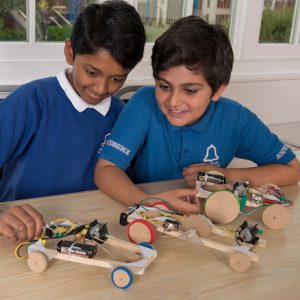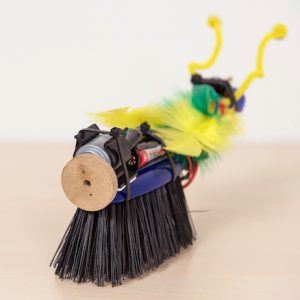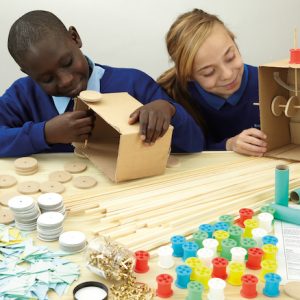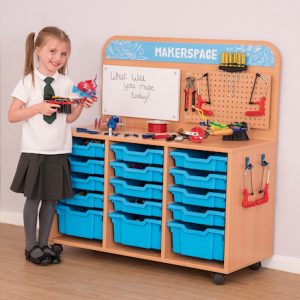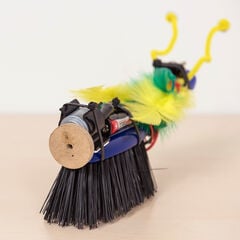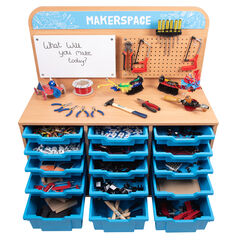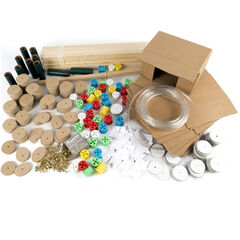Pupils learn how to take risks, becoming resourceful, innovative, enterprising and capable citizens.
National Curriculum, 2014
For many children design and technology is one of their favourite lessons and offers them a chance to excel in a different curriculum area. They can be creative, imaginative and can explore, discover and build using lots of different materials. While doing this, they are using and applying a range of learning and curriculum skills, including mathematics, science, collaboration, critical thinking, creativity and communication.
It can sometimes be tricky to know where to start when planning for D&T.
So, in this blog, we explore 6 tips and ideas to consider when planning your Design and Technology curriculum …
1. Class Kits
Making sure teachers are confident with what they have to teach and being sure that they have all the right resources for a project can be difficult.
The TTS class kits come complete with everything you need for a class project. Teachers will have all of the physical resources as well as teachers notes available online to support them. The notes highlight the different learning outcomes for each kit as well as giving a step-by-step guide.
With a wide range of topics, you can choose kits to fit in with your curriculum planning. You could set children a challenge to create a moving vehicle, a small house, a fan boat that will float, a merry go round or my personal favourite … a brush monster!
Explore the full range of TTS Class Kits
2. Working With Experts
Give children a real-life example of how design and technology skills are used beyond the classroom.
Reach out to different businesses who design and make things and explore if there is a way you can work together to inspire your young learners. You could visit their warehouse or workshop, interview their design team or ask them to set your learners a design challenge.
Universities are also a great place to visit or link up with. They will have design students or graduates who may be able to visit, talk with and inspire your class.
3. Start with a problem
We know that children respond well to having a real-life context to help motivate and inspire their learning. Whether this be an environmental problem to solve, a school issue or to create a resource for an enterprise activity, where possible give your class a purpose to their D&T project through a real-life scenario.
4. STEAM
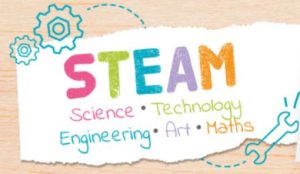
Explore opportunities for STEAM based learning within your D&T curriculum.
STEAM stands for Science, Technology, Engineering, the Arts and Maths.
STEAM is the principle of teaching these subjects through a cross-curricular approach rather than in isolation. Bringing these subjects together in this way offers many benefits to children and can help to show how we combine these areas in real life.
Through STEAM based projects, we can teach many of the design and technology outcomes and develop children’s passion and enjoyment for these subjects from the earliest opportunity.
To find out more about STEAM, click here
5. Makerspace
Inspire children with D&T by setting up a Makerspace in your school.
A Makerspace is a space where children can collaborate, be curious and innovate. The aim is to have one central place to store all of your D&T/STEAM materials and tools so that children can self-select in order to make their own design decisions. It can be as big or as small as you like. You could create a whole Makersapce workshop (if you have room), or use a Makerspace trolley to create a storage and workspace that can be moved around wherever and whenever needed.
A Makerspae can be used for all sort of activities such as building new creations or taking things apart to discover how they work.
Setting up a Makerspace is simple and there are no ‘rules’ to follow. All you need is to choose a space and then stock it up with a range of tools and materials. Your Makerspace will probably evolve over time based on the children’s developing skills and knowledge.
6. Evaluate
Evaluating is such an important part of the design process.
Be sure to plan in lots of time for evaluating, not just their own inventions but those that already exist. Not all design and technology has to involve starting from scratch. Set children a challenge to review existing products, find out how they work and then offer ways they think it could be improved. For example, you could ask children to investigate playground equipment and identify ways to make it more inclusive, or use what they have learnt about materials to offer alternatives to plastics products or packaging.
Explore our complete Design and Technology range of resources …


